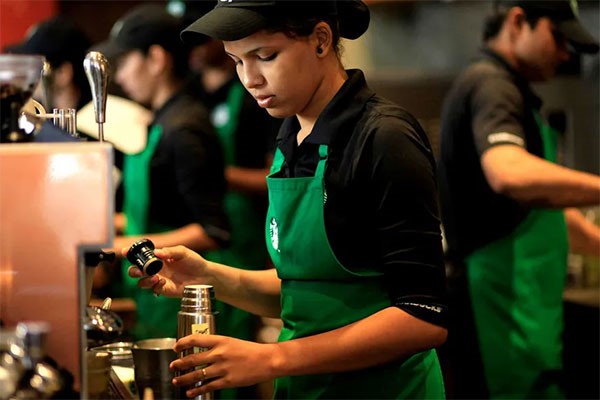As I sit back at my local Starbucks and sip on a Grande Cold Brew, I watch the pack of green-aproned employees behind the counter float and swim between one another, arms moving up and down and all over in a dance of latte and breakfast sandwich making. I marvel at the rate they crank out orders… all under the quiet hum of Olivia Rodrigo music in the background. Starbucks is known for consistency and speed, there’s something special about the purr of this team… it takes me a minute, but soon I realize- they’re barely speaking to one another. They move seamlessly around each other, handing off bottles of syrup, slipping by to place pastries on the counter, wiping messes behind each other, exchanging glances and grins. Occasionally, there’s a brief exchange about weekend plans, but beyond that, not much is said.
As I continue to observe their flow, I recognize the significance of the quiet efficiency of our barista friends. While most of us may never operate a coffee roaster or espresso machine, there’s valuable wisdom to glean from this unspoken synergy. Why don’t the Starbucks baristas need to engage in chatter as they work through the constantly-feeding train of coffee orders?
First off- It’s obvious their roles are well defined and there’s no need to talk about who does what. Gabe stands in front of the coffee machine, barely shifting a foot in any direction. Sheila wields tongs in front of the pastry oven, and another teammate is perched at the drive-through window. They seem to share an unspoken agreement: “You do you,” and “I’ll do me.”
Next- it’s clear these teammates trust each other… at least to the degree they need to on the job. When a colleague must intrude into another’s workspace, there’s a natural give-and-take, a casual “hey, how are you… sure, this is my space, but feel free to come in” signal.
The basis of communication across the entire store isn’t trust or role clarity, though… it’s the system of tagging orders. Those little white sticky tickets that pop out of magic black boxes and get plopped in strategic places, then on cops or bags, and then filled with the perfect mix of coffee, sugar and spice. Their shorthand codes reduce confusion and limit the time it takes to interpret them, and these little tags seem to be read and understood by everyone. The ticket system does most of the talking for them.
This may seem provocative, but in a world of meeting overload and messaging platform confusion, ‘effective communication’ might be better accomplished by finding ways to reduce a need for so much of it. Maybe it’s not always that we’re not great at communicating or that we need more opportunities for it. Rather… maybe it’s the opposite. Maybe we’re not getting what we need because our work flows require too much communication. Without clear roles, trust, or dialed-in systems, our Starbucks friends would probably be barking a lot more than they are, for sure. I wonder what would happen if we did it like Starbucks and leveled up our workflows and process with the intent to substantially reduce our need to communicate. This thought experiment offers us an opportunity to shift our perspective about what communication is all about.
Author: Melanie Proshchenko





